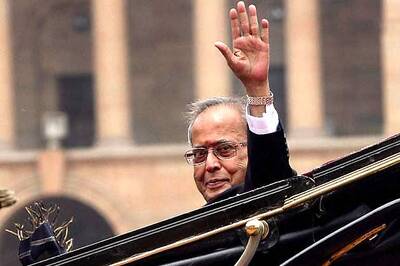
views
Even as several states recently reintroduced the old pension scheme (OPS) and several others contemplating it, the RBI on Monday said the decision of some states to revert to OPS poses significant fiscal risks for states, apart from dampening India’s medium-term macroeconomic outlook.
Recently, five states reintroduced OPS, including Rajasthan, Chhattisgarh, Jharkhand, Punjab and Himachal Pradesh. Apart from these, Haryana has also witnessed a series of employee union protests in February to reintroduce OPS.
Rajasthan was the first state to reintroduce the old pension scheme in April 2022, followed by Chhattisgarh (notifying OPS in December 2022), Jharkhand and Punjab (October 2022), and Himachal Pradesh (April 2023).
The central government introduced the National Pension System (NPS) in 2004, which is a defined contribution (DC) scheme. It replaced the Old Pension Scheme (OPS), which was a defined benefit plan.
“While pension reforms which took place across the states during the first decade of this century were much needed to assist fiscal consolidation and
enhance fiscal flexibility (viz., reallocation of their budget towards growth enhancing expenditures), the recent decisions and announcements by some of the States to revert to the OPS (with a few others contemplating the same), pose significant fiscal risks for the states which could have distortionary effects on the labour market, savings and investments as well as capital market development and dampen the country’s medium-term macroeconomic outlook,” the RBI said in its Bulletin September 2023.
The pension plans of the governments are generally classified into defined benefit, defined contribution and hybrid pension arrangements. In a DB plan, benefits are defined in advance based on the employee’s final or average salary and those benefits are guaranteed by the government as the
sponsor.
In contrast, DC plans do not have a guarantee component. The pension benefits depend upon the market performance of the pension fund and the government’s cost is limited to a prespecified rate of contribution.
Hybrid pension arrangements offer a minimum return or benefit guarantee and may also offer a variable (DClike) benefit over and above the minimum return or benefit guarantee.
“Recently, a few States like Rajasthan, Chhattisgarh, Jharkhand, Punjab and Himachal Pradesh have announced reversal to the OPS from NPS. The immediate gain is that they will not have to spend on NPS contribution of the current employees. In future, however, the unfunded OPS is likely to exert severe pressures on their finances, especially with increasing longevity,” the RBI said.
Six large states viz., Uttar Pradesh, Rajasthan, Madhya Pradesh, Maharashtra, Chhattisgarh, and Karnataka account for around half of all the subscribers to NPS. Uttar Pradesh and Rajasthan are the only two states, which have more than five lakh subscribers (as on November 30, 2022).
NPS Vs OPS
The National Pension Scheme requires employees to contribute 10 per cent of their basic salary and the government 14 per cent. The eventual payout depends on the market returns on that corpus, which is mostly invested in debt.
In contrast, the old pension system guarantees a fixed pension of 50 per cent of an employee’s last-drawn salary, without requiring them to contribute anything during their working life.
The old pension scheme, referred to as the Defined Benefit Pension System (DBPS), is based on the last pay drawn by the employee. The NPS is referred as the Defined Contribution Pension System (DCPS), in which the employer and employee contribute to build a pension wealth payable at the time of retirement by way of annuity/lumpsum withdrawal as per norms.
Under the OPS, the employee could withdraw 50 per cent of the last-drawn salary as pension after the retirement.
Under the NPS, a person is allowed to withdraw 60 per cent of the accumulated corpus contributed during his/ her working years at the time of retirement, which is tax-free. The remaining 40 per cent is converted into an annuatised product, which could currently provide the person with a pension of 35 per cent of his/ her last-drawn pay.
The NPS is applicable to all employees joining services of the central government, including central autonomous bodies (except Armed Forces) on or after January 1, 2004. Many state governments have also adopted NPS architecture and implemented NPS mandatorily for their employees joining on or after a cut-off date.




















Comments
0 comment